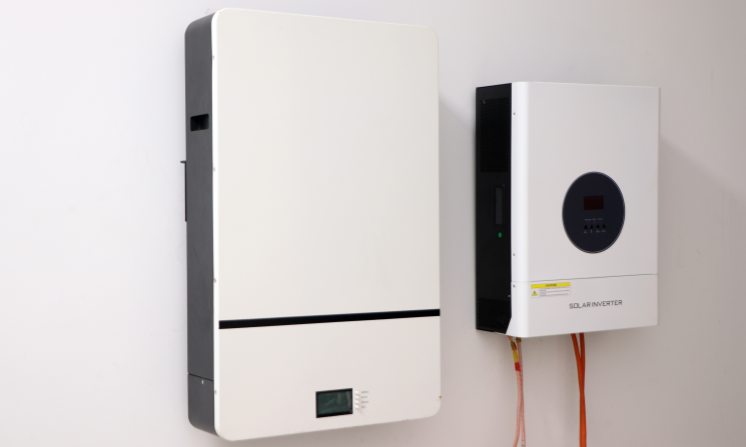How many KWh is 51.2V 200Ah?
Mar 26, 2025
In the field of energy storage batteries, 51.2V 200Ah is a common specification in home energy storage systems. For users, understanding the actual energy storage capacity (i.e. kWh) of this parameter is the key to evaluating system performance. Based on GreenMore's professional experience and combined with the technical standards of the energy storage industry, this article will analyze the energy calculation logic of 51.2V 200Ah batteries and explore their value in different application scenarios.
Energy calculation method for 51.2V 200Ah battery
The energy storage capacity of a battery is usually measured in kilowatt-hours (kWh), while ampere-hours (Ah) and volts (V) are the basic parameters for describing battery capacity. The conversion formula between the three is:
Energy (kWh) = Voltage (V) × Capacity (Ah) / 1000
Take GreenMore's 51.2V 200Ah lithium iron phosphate battery as an example:
Energy = 51.2V×200Ah/1000 =10.24kWh
This result means that the battery can store 10.24 kWh of electricity when fully charged, which is enough to meet 10-15% of the average household's daily electricity demand (taking an average daily electricity consumption of 60-80 kWh as an example).
Why is energy storage battery capacity measured in kWh?
1. Directly related to the electricity price system
The global electricity market generally uses "kWh" as the billing unit. When users use energy storage systems to achieve peak-valley electricity price arbitrage or off-grid power supply, kWh can directly quantify economic benefits. For example, GreenMore's home energy storage system can help users release 10.24kWh of energy charged during valley power hours during peak power hours, saving electricity expenses.
2. Compatible with photovoltaic and inverter systems
The 51.2V voltage design is suitable for mainstream 48V photovoltaic systems (such as 5kW-10kW inverters), and the kWh indicator directly reflects the matching degree between the system and photovoltaic power generation. For example, GreenMore's stacked energy storage module supports multiple machines in parallel. Users can flexibly expand to 30.72kWh (3 sets of 51.2V 200Ah batteries in parallel) according to the rooftop photovoltaic installed capacity (such as 15kW), achieving 100% self-consumption of photovoltaic power generation.
3. Comply with international standards and certification requirements
International certification systems such as UL and IEC require energy storage equipment to clearly mark the kWh energy value to ensure safety and compatibility. GreenMore's 51.2V 200Ah battery has passed UN38.3, CE and other certifications, and its 10.24kWh energy parameter has become the core basis for overseas customers' purchasing decisions.
Impact of technical parameters on practical applications
1. Cycle life and energy decay
GreenMore's lithium iron phosphate battery has a cycle life of 6,500 times (80% DOD), which means that the 10.24kWh initial energy can still maintain more than 80% after long-term use. For example, the Colombian household energy storage project uses 51.2V 200Ah batteries, which are charged and discharged once a day. After 10 years, it can still provide 8.19kWh of effective energy, significantly reducing LCOE (levelized cost of electricity).
2. Effect of temperature on energy efficiency
In low temperature environments, the internal resistance of the battery increases, resulting in a decrease in available energy. GreenMore's temperature-controlled lithium battery technology can extend the operating temperature range to -20°C to 60°C, ensuring that a 51.2V 200Ah battery can still release more than 90% of its nominal energy (about 9.22kWh) at -10°C, which is suitable for household energy storage needs in high-cold areas.
3. Parallel scalability and system redundancy
Through modular design, GreenMore's 51.2V 200Ah battery supports unlimited parallel connection. For example, the Ethiopian hotel energy storage project uses 20 groups of batteries in parallel with a total capacity of 204.8kWh, which can achieve millisecond-level load switching with the EMS system to ensure power supply reliability.
How do users choose the appropriate energy storage capacity?
1. Home energy storage scenario
Need
Plan
Average daily electricity consumption ≤30kWh
A single 51.2V 200Ah (10.24kWh) battery can cover basic loads such as night lighting and home appliances.
Off-grid power supply needs
It is recommended to configure 2-3 sets of batteries (20.48-30.72kWh) with a 5kW inverter to achieve 72 hours of self-sufficiency.
2. Commercial energy storage scenarios
Need
Plan
Industrial and commercial peak-to-valley arbitrage
According to the local electricity price difference and load curve, choose a 100-500kWh system. For example, a Spanish food processing plant installed 5 sets of 50KW/100KWh batteries (512kWh), with an annual arbitrage income of more than 300,000 euros.
Microgrid and backup power
GreenMore's commercial energy storage cabinet (40-foot container solution with a capacity of 2MWh) can support emergency power supply for communities or industrial parks for more than 4 hours.
GreenMore's technical advantages and cases
As a professional energy storage battery manufacturer, GreenMore's 51.2V 200Ah battery has the following differentiated competitiveness:
High energy density: The volume energy density reaches 160Wh/kg, which is 300% higher than traditional lead-acid batteries and saves more than 50% of installation space.
Intelligent BMS system: real-time monitoring of battery status, supporting SOC (remaining power) accuracy ≤2%, avoiding the risk of overcharging and over-discharging.
Case: A German household photovoltaic energy storage project uses GreenMore's 51.2V 200Ah battery, paired with a 10kW photovoltaic system, to achieve an average daily power generation of 40kWh, of which 25kWh is stored in the battery. The proportion of self-use electricity has increased from 30% to 85%, reducing carbon emissions by 12 tons per year.
In summary, the 10.24kWh energy of the 51.2V 200Ah battery is not only a reflection of technical parameters, but also GreenMore's commitment to the economy, reliability and sustainability of energy storage systems. Whether it is a household user pursuing a green and low-carbon life or a corporate customer optimizing energy costs, choosing GreenMore's energy storage solution can maximize energy value.
Contact the GreenMore team now or visit www.gmsolarkit.com to get customized energy storage solutions and start your energy transformation journey!



 Network Supported
Network Supported